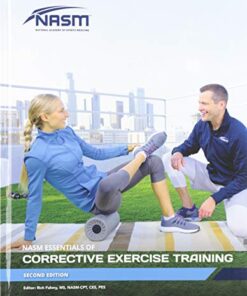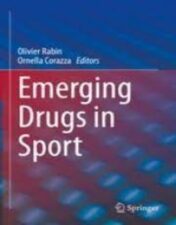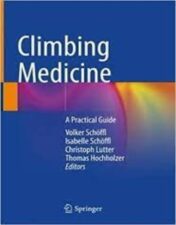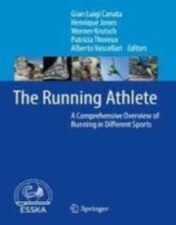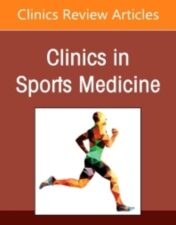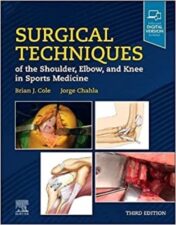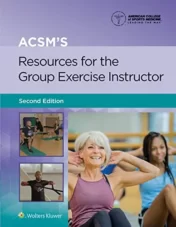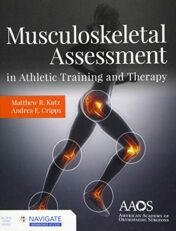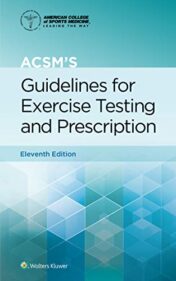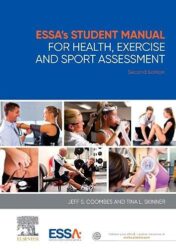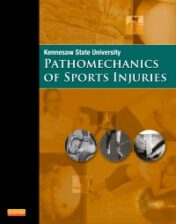Sports Medicine Books
Essentials of Corrective Exercise Training, 2nd Edition (Original PDF from Publisher)
Sports Medicine Books
Pfeiffer and Mangus’s Concepts of Athletic Training, 8th Edition 2022 Original PDF
Sports Medicine Books
Voeten en sport: Behandeling, preventie en verzorging (Dutch Edition) 2022 Original PDF
Sports Medicine Books
Revision Anterior Cruciate Ligament Reconstruction A Case-Based Approach 2022 Original pdf
Sports Medicine Books
Fitness auf dem Prüfstand Testen Sie Ihre sportliche Leistungsfähigkeit 2022 Original pdf
Sports Medicine Books
Glenohumeral Osteoarthritis in the Young Patient Evaluation and Management 2022 Original pdf
Sports Medicine Books
Sports Medicine Books
Sports Medicine Books
The Running Athlete A Comprehensive Overview of Running in Different Sports 2022 Original pdf
Sports Medicine Books
Sports Anesthesia, An Issue of Clinics in Sports Medicine 1st Edition – March 21, 2022 Original pdf
Sports Medicine Books
Surgical Techniques of the Shoulder, Elbow, and Knee in Sports Medicine 3rd Ed 2022 True pdf
Sports Medicine Books
Sports Medicine Books
Sports Medicine Books
Functional Exercise Prescription in Movement, Rehabilitation and Sport 2022 Original PDF
Sports Medicine Books
Clinical Sports Nutrition 6th Edition 2021 EPUB & converted pdf
Sports Medicine Books
ACSM’s Resources for the Group Exercise Instructor, 2nd Edition 2022 EPUB + Converted PDF
Sports Medicine Books
Musculoskeletal Assessment in Athletic Training and Therapy 2020 EPUB + Converted PDF
Sports Medicine Books
The Complete Guide to Sports Nutrition (9th Edition) (Complete Guides) 2022 Original PDF
Sports Medicine Books
Sports Medicine Books
Advanced Statistics for Physical and Occupational Therapy 2022 Original PDF
Introduction
Are you an athlete looking to improve your performance? Discover the best sports medicine books to help you reach your goals. Sports medicine is a field of medicine that focuses on helping athletes prevent and treat injuries, as well as improve their overall performance. With the right knowledge, you can take your game to the next level. From comprehensive guides to specialized topics, these books provide valuable insight into the world of sports medicine. Learn about the latest research, techniques, and strategies to help you stay healthy and perform at your peak. Whether you’re a professional athlete or just starting out, these books will give you the tools you need to succeed.
Understanding the Basics of Sports Medicine
Sports medicine is a field of medicine that focuses on the prevention, diagnosis, and treatment of injuries related to physical activity. It is a multidisciplinary field that combines medical knowledge with an understanding of biomechanics, exercise physiology, nutrition, psychology, and other areas. Sports medicine professionals work with athletes of all ages and abilities to help them stay healthy and perform at their best.
Sports medicine professionals include physicians, physical therapists, athletic trainers, and other healthcare providers who specialize in sports-related injuries and conditions. They work together to provide comprehensive care for athletes. This includes diagnosing and treating injuries, providing rehabilitation services, and helping athletes return to their sport safely.
Sports medicine professionals use a variety of techniques to diagnose and treat injuries. These include imaging tests such as X-rays and MRIs, physical examinations, and laboratory tests. They also use specialized treatments such as ultrasound, electrical stimulation, and laser therapy.
In addition to diagnosing and treating injuries, sports medicine professionals also focus on injury prevention. This includes educating athletes about proper technique and form, as well as providing advice on nutrition, hydration, and rest. They may also recommend specific exercises or activities to help strengthen muscles and improve flexibility.
Sports medicine professionals also work with coaches and trainers to develop individualized training programs for athletes. These programs are designed to help athletes reach their goals while minimizing the risk of injury.
Sports medicine professionals play an important role in helping athletes stay healthy and perform at their best. By combining medical knowledge with an understanding of biomechanics, exercise physiology, nutrition, psychology, and other areas, they can provide comprehensive care for athletes of all ages and abilities.
Developing an Effective Injury Prevention Program
Developing an effective injury prevention program is essential for any organization or business that wants to ensure the safety of its employees and customers. Injury prevention programs are designed to reduce the risk of injuries in the workplace by identifying potential hazards, implementing safety protocols, and providing training and education to employees.
The first step in developing an effective injury prevention program is to identify potential hazards in the workplace. This includes assessing the physical environment, such as the layout of the workspace, the use of machinery, and the presence of hazardous materials. It also involves evaluating the behavior of employees, such as their adherence to safety protocols and their understanding of safety procedures. Once potential hazards have been identified, steps can be taken to reduce the risk of injury.
Once potential hazards have been identified, the next step is to implement safety protocols. This includes establishing policies and procedures for safe work practices, providing protective equipment, and ensuring that all employees are trained on proper safety procedures. Additionally, it is important to ensure that all employees are aware of the risks associated with their job and that they understand how to prevent injuries.
In addition to implementing safety protocols, it is also important to provide training and education to employees. This includes providing information about the risks associated with their job, teaching them how to properly use safety equipment, and educating them on the importance of following safety protocols. Additionally, it is important to provide regular refresher courses to ensure that employees remain up-to-date on safety protocols.
Finally, it is important to monitor the effectiveness of the injury prevention program. This includes tracking the number of injuries that occur in the workplace, evaluating the effectiveness of safety protocols, and assessing the level of employee compliance with safety protocols. By monitoring the effectiveness of the program, organizations can make adjustments as needed to ensure that the program is working as intended.
Developing an effective injury prevention program is essential for any organization or business that wants to ensure the safety of its employees and customers. By identifying potential hazards, implementing safety protocols, and providing training and education to employees, organizations can reduce the risk of injuries in the workplace and create a safer environment for everyone.
Improving Athletic Performance Through Nutrition and Hydration
Good nutrition and hydration are essential for athletes to perform at their best. Eating the right foods and drinking enough fluids can help athletes maximize their performance, reduce fatigue, and prevent injury.
Nutrition is an important part of any athlete’s training program. Eating a balanced diet that includes carbohydrates, proteins, fats, vitamins, minerals, and water will provide the energy and nutrients needed for optimal performance. Carbohydrates are the primary source of energy for athletes and should make up the majority of their daily caloric intake. Proteins are important for muscle growth and repair, while fats provide energy and help with absorption of certain vitamins and minerals. Vitamins and minerals are essential for proper functioning of the body and should be obtained from a variety of sources such as fruits, vegetables, dairy products, and whole grains.
Hydration is also key for athletes. Staying properly hydrated helps maintain blood volume, regulate body temperature, and transport nutrients throughout the body. It is important to drink plenty of fluids before, during, and after exercise to replace lost fluids and electrolytes. Water is the best choice for hydration, but sports drinks can be beneficial for athletes who are exercising for more than an hour or in hot weather.
In addition to eating a balanced diet and staying hydrated, athletes should also pay attention to timing of meals and snacks. Eating a meal or snack two to three hours before exercise will provide energy and help prevent hunger during activity. Eating within 30 minutes after exercise will help replenish glycogen stores and aid in recovery.
By following these guidelines, athletes can ensure they are getting the nutrition and hydration they need to perform at their best. Eating a balanced diet, staying hydrated, and timing meals and snacks appropriately can help athletes maximize their performance and reduce the risk of injury.
Utilizing Physical Therapy to Enhance Athletic Performance
Physical therapy is an important part of any athlete’s training regimen. It can help athletes improve their performance, reduce the risk of injury, and recover from injuries more quickly. Utilizing physical therapy to enhance athletic performance is a great way for athletes to maximize their potential and stay healthy.
Physical therapists are trained professionals who specialize in helping people improve their physical abilities. They use a variety of techniques, such as stretching, strengthening, and balance exercises, to help athletes reach their goals. Physical therapists also provide education on proper form and technique, which can help athletes avoid injury and improve their performance.
Physical therapists can help athletes improve their strength, power, speed, agility, and endurance. Strength training is an important part of any athlete’s training program, and physical therapists can help athletes develop a safe and effective strength training program. They can also help athletes improve their flexibility, which can help them move more efficiently and reduce the risk of injury.
Physical therapists can also help athletes with injury prevention and recovery. They can assess an athlete’s risk of injury and create a plan to reduce that risk. They can also help athletes recover from injuries more quickly by providing treatments such as massage, ultrasound, and electrical stimulation.
Utilizing physical therapy to enhance athletic performance is a great way for athletes to maximize their potential and stay healthy. Physical therapists can help athletes improve their strength, power, speed, agility, and endurance, as well as reduce their risk of injury and recover from injuries more quickly. With the help of a physical therapist, athletes can reach their goals and perform at their best.
Exploring the Latest Advances in Sports Medicine Technology
Sports medicine technology has come a long way in recent years, and it continues to evolve as new advances are made. From the use of advanced imaging techniques to the development of sophisticated prosthetics, sports medicine technology is helping athletes stay healthy and perform at their best.
One of the most important advances in sports medicine technology is the use of advanced imaging techniques. These techniques allow doctors to get a better look at an athlete’s body and diagnose injuries more accurately. For example, MRI scans can provide detailed images of soft tissues, such as muscles and ligaments, which can help doctors identify and treat injuries more effectively. Ultrasound imaging is also used to detect muscle tears and other injuries that may not be visible on an X-ray.
Another major advance in sports medicine technology is the development of sophisticated prosthetics. Prosthetics are artificial limbs or devices that can be used to replace missing or damaged parts of the body. They can be used to help athletes with disabilities compete in sports, as well as to help injured athletes recover from their injuries. Prosthetics have become increasingly sophisticated over the years, with some models being able to replicate the movements of a natural limb.
In addition to these advances, sports medicine technology has also seen the development of new treatments for injuries. For example, stem cell therapy is being used to treat a variety of sports-related injuries, including tendon and ligament damage. Stem cells are harvested from the patient’s own body and then injected into the injured area to promote healing. This type of treatment has been shown to be effective in treating a variety of sports-related injuries.
Finally, sports medicine technology has also seen the development of new technologies to monitor athletes’ performance. Wearable sensors can be used to track an athlete’s heart rate, breathing rate, and other vital signs during training and competition. This data can then be used to help coaches and trainers adjust an athlete’s training program to maximize performance.
Overall, sports medicine technology has come a long way in recent years, and it continues to evolve as new advances are made. From the use of advanced imaging techniques to the development of sophisticated prosthetics, sports medicine technology is helping athletes stay healthy and perform at their best.
Conclusion
Sports medicine books can be a great resource for athletes looking to improve their performance. They provide valuable information on nutrition, injury prevention, and recovery techniques that can help athletes reach their goals. With the right book, athletes can learn how to maximize their potential and stay healthy while doing so. Whether you’re a professional athlete or just starting out, there is a sports medicine book out there that can help you reach your goals. Discover the best sports medicine books to improve your athletic performance today and take your game to the next level.

